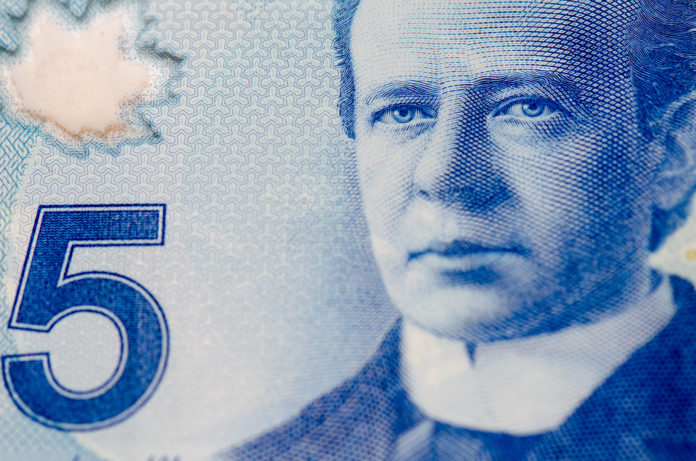The Bank of Canada announced on Monday the short list of Canadians who will be considered for the featured imagery on the next $5 bank note.
The most recent design features former Prime Minister Sir Wilfred Laurier one the front face and the Canadarm2 and Dextre on the reverse.
Laurier is expected to be featured on a different denomination following his replacement by one of the final candidates on the short list.
Eight people have been selected by the independent Advisory Council to proceed to the final stage of the process. They are:
- Pitseolak Ashoona: [c. 1904-1908]–1983
Pitseolak Ashoona was a self-taught Inuk artist and a member of the Order of Canada. She started drawing with graphite pencil, then moved on to coloured pencils and felt-tip pens. Ashoona’s work reflected her lived experience in the traditional Inuit semi-nomadic lifestyle, and was internationally exhibited and lauded. - Robertine Barry (“Françoise”): 1863–1910
Robertine Barry was Canada’s first French female journalist. She first published under the pen name “Françoise,” a name she would use at Montreal’s La Patrie for over eight years. She later became the publisher of a bimonthly magazine, Le Journal de Françoise, which published many female journalists in Quebec. Barry’s columns championed women’s suffrage, access to university education, and other women’s and social issues. - Binaaswi (Francis Pegahmagabow): 1888–1952
Binaaswi (Francis Pegahmagabow) was a decorated WWI veteran and sniper of near-legendary skill, as well as a strong advocate for Indigenous rights in Canada. He was awarded the British Military Medal with Two Bars for actions he took during the Battles of Passchendaele and Scarpe, and was credited with killing or capturing nearly 700 enemy combatants. - Won Alexander Cumyow: 1861–1955
Won Alexander Cumyow was the first Chinese-Canadian known to be born within the boundaries of modern-day Canada. He was born in Port Douglas, B.C., during the Fraser Canyon Gold Rush, and later worked as a court interpreter in Vancouver. When Chinese Canadians were stripped of their voting rights by legislation in the 1880’s and 1890’s (along with Japanese and Indigenous Canadians in 1895), Cumyow fought using his legal background and was finally able to vote in 1949, decades later. - Terry Fox: 1958–1981
Terry Fox is nationally renowned for his “Marathon of Hope,” a journey Fox undertook on foot across Canada after losing a leg to cancer. Departing on April 12, 1980, from St. John’s, Newfoundland, Fox covered a distance of 5,373 kilometres in 143 days. He was forced to stop in Thunder Bay on September 1, when cancer spread to his lungs, and died on June 28, 1981 in New Westminster. Canadians honour his memory with annual “Marathon of Hope” events all over the country. - Lotta Hitschmanova: 1909–1990
Lotta Histchmanova (born Lotta Hischmann) was a Jewish Czechoslovakian and freelance journalist who was forced to flee Nazi Germany’s invasion in 1939. Initially seeking refuge in France, Hitschmanova began using the Slavic version of her Germanic name as a form of protest and worked with a refugee organization in Marseilles. She was granted a visa in 1942 to seek refuge in Canada, and took charge of the Ottawa branch of the Unitarian Service Committee, becoming an advocate for relief and refugee programs. - Isapo-muxika (Crowfoot): c. 1830–1890
Isapo-muxika, best known as Crowfoot, was a Siksika Chief and leader of the Blackfoot Confederacy. He was known as a skilled diplomat who initially welcomed the North-West Mounted Police as a law enforcement body against illegal American whisky traders. Isapo-muxika was a main point of contact for the Canadian government’s negotiations on Treaty 7. He later became disillusioned by widespread starvation exacerbated by government actions, but recognized from the example of Louis Riel that violent action against overwhelming white Canadian numbers would be hopeless. - Onondeyoh (Frederick Ogilvie Loft): 1861–1934
Onondeyoh (Frederick Ogilvie Loft) was a Mohawk Chief, WWI veteran and Indigenous rights advocate who also worked as a reporter, author, and lumberman. He first suggested the idea of a pan-Indigenous organization in a letter to the Toronto Globe in 1896, proposing a partnership between Ojibwe and Haudenosaunee nations. After the war, Onondeyoh saw firsthand the unequal treatment of Indigenous veterans and Indigenous people at large. He then worked to make his idea for Canada’s first pan-Indigenous organization a reality, forming the League of Indians in December 1916.
Final decision rests with Minister of Finance
The Advisory Council shortlisted the candidates from over 600 eligible nominees submitted from nearly 45,000 Canadians during a six-week public consultation that ended on March 11, 2020.
“Canadians put forward the names of hundreds of people who have changed Canada for the better,” said Bank of Canada Governor Tiff Macklem.
“I thank the Advisory Council members for their thoughtful and thorough deliberations, and I look forward to seeing which of these eight remarkable individuals will be featured on our next $5 bank note.”
The final decision for the subject of the $5 bill rests with the Minister of Finance, as laid out in section 25 of the Bank of Canada Act.
Deputy Prime Minister Chrystia Freeland took on the role of Finance Minister in August, following the resignation of Toronto Centre MP Bill Morneau over the WE Charity scandal.
Following the final decision, the Bank of Canada will then enter a design process to feature the selected candidate. They say it will likely take a few years before the notes begin circulating.



